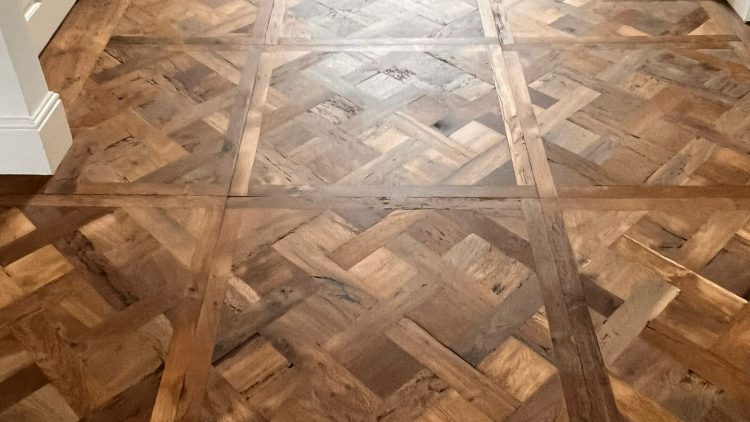Guide to Parquet Floor Polishing
The Ultimate Guide to Parquet Floor Polishing
A well-polished parquet flooring can significantly enhance the ambience of any room, bringing a sense of warmth, class, and sophistication. This transformation is not only visually appealing but also adds a touch of elegance to your space.
But how can you achieve and maintain this remarkable effect for the long haul? The answer lies in understanding the process of parquet floor polishing and the best practices for maintaining it.
This all-encompassing guide to parquet floor polishing will equip you with the necessary knowledge and tips to refurbish, safeguard, and sustain your parquet flooring. It’s time to delve into the world of parquet floor restoration and discover the hidden charm of your parquet flooring!
Whether you’re a do-it-yourself aficionado or contemplating hiring a professional, this guide provides valuable insights and expert recommendations. From selecting the appropriate polish to preparing your floor for the polishing process, you’ll find everything you need here. With these tips and techniques, your parquet flooring will remain beautiful and resilient for many years.
Key Takeaways
- Understand the benefits and types of polishes available for parquet flooring.
- Prepare your parquet flooring before polishing, including cleaning the surface and addressing minor repairs.
- Hire a professional to achieve a polished result with expert knowledge, specialized equipment and time-saving techniques.
The Art of Parquet Floor Restoration
Maintaining the beauty and longevity of your wood flooring involves parquet flooring maintenance. Floor restoration not only enhances the aesthetic appeal of your parquet floors but also safeguards them from harm, extending their service life and preserving their unique charm. Parquet flooring, a type of hardwood floor, is composed of solid wood blocks arranged in geometric or regular patterns, such as herringbone and chevron. This intricate design provides a distinctive and elegant appearance that can be maintained and protected through regular cleaning and care.
Understanding the various types of parquet flooring polishes and their respective benefits is key to achieving a beautifully polished parquet floor. Some examples of the different wood types used in parquet floors include:
- Oak
- Pine
- Pitch pine
- Teak
The type of polish you choose will depend on factors such as the wood type, the desired finish, and the current condition of your floor. In the following sections, we’ll delve deeper into the benefits of regular polishing, the different types of finishes available, and the importance of selecting the right polish for your parquet flooring.
Benefits of Regular Polishing
The beauty and functionality of your parquet flooring are preserved through regular polishing. By routinely polishing your floors, you help:
- Restore their original shine and lustre, giving them a refreshed and revitalized appearance
- Seal the parquet floors, preventing dirt and dust from entering the wood and causing damage
- Protect your parquet floors from everyday wear and tear, extending its longevity
- Ensure it remains a stunning focal point in your home
In addition to the aesthetic and protective benefits, regular re-coating also contributes to a healthier living environment. A well-maintained parquet flooring is easier to clean and less prone to harbour allergens, dust, and dirt. Incorporating regular polishing into your wooden floor maintenance routine not only maintains the beauty of your floor but also contributes to a cleaner, more pleasant living space for you and your family.
Types of Parquet Floors Polishes
There are several types of wooden floor polishes available, each with its own advantages and disadvantages. Wax, oil, and lacquer are the most common options, and understanding the differences between them will help you make an informed decision when choosing the right polish for your parquet floors.
- Oil finishes penetrate the wood, providing internal protection and nourishing the wood from within. These types of finishes are an excellent choice for those seeking to preserve the natural colour and grain of their real wood floors. However, they may require more frequent reapplication compared to lacquer-based finishes unless you use 2 component oils like Magic Oil from Pallmann.
- Lacquer, on the other hand, forms a protective film on the surface of the parquet, offering optimal protection with minimal upkeep. It is suitable for high-traffic areas but is more susceptible to scratches and may eventually wear off, leaving the floor unprotected unless renewed. Additionally, some people find that lacquer can give the floor a “plastic” appearance, detracting from the natural beauty of the wood.
- Wax is a combination of both it permeates the wood and provides a protective layer on the surface. However, it is generally not the top pick for high-traffic areas since the surface layer is prone to scratches.
When selecting a polish for your parquet floor, consider factors such as the type of wood, the desired finish, and the level of protection you require. Obviously, if you had your floors already sanded and refinished it is crucial you use the same type of coating that already sits on your flooring. Ultimately, the right polish will not only enhance the appearance of your floor but also provide long-lasting protection and durability.
Preparing Your Parquet Floor for Polishing
Before starting the polishing process, proper preparation of your parquet floor is necessary. This includes thoroughly cleaning the surface and addressing any minor repairs that may be necessary. Proper preparation ensures that your parquet floor is in the best possible condition, allowing for a smooth and even polished application and a flawless final result.
The next subsections will address the importance of cleaning the surface of your parquet floor and dealing with minor repairs. By taking the time to complete these preparatory steps, you’ll set the stage for a successful parquet floor polishing process and a stunning outcome.
Cleaning the Surface
Cleaning the surface of your parquet floor thoroughly is an important part of the preparation process. Dirt, dust, and debris can cause scratches and other imperfections in the polish application, resulting in an uneven and unsatisfactory finish. To properly clean the surface, follow these steps:
- Use a vacuum cleaner with a brush attachment to remove dirt, dust, and debris from your floor.
- Following vacuuming, use a damp mop to effectively remove any remaining dirt and debris.
- Allow the floor to dry completely before proceeding to the polishing process.
Before applying the polish, it’s necessary to take time to inspect the floor carefully and remove any remaining dirt or debris. This attention to detail ensures that your parquet floor will be in the best possible condition for the polishing process, resulting in a smooth and even application and a beautiful, polished finish.
Addressing Minor Repairs
Addressing any minor repairs, including fixing a damaged parquet floor, is also crucial, along with cleaning the surface, before polishing your parquet floor. Here are the steps to follow:
- Fix loose blocks by reattaching or using replacement blocks as necessary, ensuring they are securely in place.
- Fill gaps with a suitable filler or slivers.
- Repair scratches by lightly floor sanding the affected area and applying a matching wood stain or finish. Deep scratches must be addressed by a professional floor restoration company and a full floor sanding process might be necessary.
These steps will not only improve the appearance of your floor but also enhance its overall quality and durability through floor restoration.
By taking the time to address these minor repairs, you’ll ensure a flawless polishing result and a stunning parquet floor that will stand the test of time. Properly preparing your parquet floor for polishing is an investment in the beauty and longevity of your wooden floors, and the effort will be well worth it in the end. Parquet floor restoration is a crucial step in maintaining the elegance of your home.
Step-by-Step Guide to Parquet Floor Polishing
Now that your parquet floor is prepared for polishing, we can proceed to the step-by-step process. In this section, we’ll provide you with a detailed guide on how to polish your parquet floor, from choosing the right polish to buffing the floor for a perfect finish. By following these steps, you’ll achieve a beautifully polished parquet floor that will not only enhance the appearance of your home but also provide long-lasting protection and durability.
Whether you’re a DIY enthusiast or considering hiring a professional, this comprehensive guide will equip you with the knowledge and techniques you need to polish your parquet floor successfully. So, let’s get started on your journey towards a stunning, polished parquet floor!
Choosing the Right Polish
The first step in the parquet floor polishing process is selecting the right polish for your floor. As mentioned earlier, there are several types of polishes available, including wax, oil, and lacquer. The best polish for your parquet floor will depend on factors such as the type of wood, the desired finish, and the level of protection you require.
When choosing a polish for your parquet flooring, it’s important to consider the following:
- Read and follow the manufacturer’s instructions and recommendations.
- Check if there are any specific requirements for your particular wood type or flooring.
- Consider the application technique required for the polish. By selecting the right polish and following these guidelines, you’ll ensure optimal results and a long-lasting, beautiful finish.
Applying the Polish
Once you’ve chosen the appropriate polish for your parquet floor, it’s time to apply it. However, the application method can vary depending on whether you’re using lacquer, oil, or wax. Let’s delve into each one:
Applying Lacquer Polish
Lacquer is applied using a paintbrush or roller. Begin by stirring the lacquer to ensure it’s well mixed. Apply it in thin, even layers, always following the direction of the wood grain. It’s crucial to allow each layer to dry fully before applying the next.
Applying Oil Polish
Oil is typically applied using a cloth or brush. Like lacquer, it should be applied in thin, even layers. However, oil has the added benefit of penetrating the wood, nourishing it from within. After applying the oil, leave it to penetrate the wood for a few minutes before wiping off the excess. The floor should then be left to dry for several hours.
Applying Wax Polish
Wax is usually applied using a cloth or a wax applicator. Start by applying a thin layer of wax to a small section of the floor, then buff it using a cloth or a buffing machine. This will help the wax penetrate the wood and create a hard, protective layer. Once the wax has been buffed and the floor is dry, you can apply additional layers if desired for extra protection.
Parquet Floor Polishing Tips and Tricks
Achieving professional-looking results in parquet floor polishing requires practice and patience, but these can be attained quickly with the right tips and tricks. In this section, we’ll share some expert advice to help you polish your parquet floor to perfection.
From ensuring proper ventilation during the polishing process to testing the polish on a small, inconspicuous area of the floor, these tips and tricks will help you avoid common pitfalls and achieve a stunning, polished parquet floor to be proud of. So, let’s explore these valuable insights and put them into practice for your parquet floor polishing project!
Proper Ventilation
Adequate ventilation during the polishing process is vital for your health and the project’s success. Proper ventilation prevents the inhalation of harmful fumes from the polish and speeds up the drying time, allowing you to complete the project more efficiently.
To ensure proper ventilation, open windows and doors in the room where you’re working. Additionally, use fans to circulate the air and help remove fumes from the room. By maintaining adequate ventilation throughout the polishing process, you’ll not only protect yourself and others from potential health risks but also achieve better, faster results.
Testing the Polish
Before applying the polish to your entire floor, it’s important to test it on a small, inconspicuous area to ensure compatibility and the desired results. This simple test can help you avoid potential issues and ensure that your chosen polish is suitable for your parquet floor.
Apply the polish to a small, hidden area of the floor and allow it to dry completely. Assess the results for compatibility and appearance. If the test is successful and the polish produces the desired outcome, you can confidently proceed with the polishing process. If the test results are unsatisfactory, consider trying a different polish or consult with a professional for guidance.
Maintaining the Polished Floor
After achieving a beautifully polished parquet floor, proper maintenance is crucial to preserve its beauty and durability for years to come. Proper maintenance includes routine cleaning and care tips that will help prolong the life of your polished floor.
To maintain your polished parquet floor, follow these steps:
- Sweep and vacuum the floor regularly to remove dirt and debris.
- Use a damp mop and a mild detergent to clean the floor, being careful not to use excessive water.
- Consider applying a high-quality parquet floor polish on a regular basis to maintain the floor’s shine and protection and avoid/delay another floor sanding.
By following these maintenance tips, you’ll keep your parquet floor looking stunning and in top condition for years to come.
Hiring a Professional for Parquet Floor Polishing
Polishing your parquet floor can be a rewarding DIY project, but there are instances when it might be more feasible to hire a professional. A professional has the experience, knowledge, and specialized equipment to ensure a flawless result, saving you time and effort. In this section, we’ll explore the advantages of hiring a professional for parquet floor polishing and provide guidance on how to select a reputable floor restoration company.
Whether you’re unsure about the right polish for your floor, facing a particularly challenging repair, or simply want to ensure a perfect result, hiring a professional can provide peace of mind and a beautiful, polished parquet floor.
Advantages of Professional Services
Hiring a professional for wood floor polishing offers several advantages, including expert knowledge, specialized equipment, and time-saving techniques. Professionals possess the expertise to determine the most suitable polish for your parquet floors and the appropriate methods for applying and buffing the polish. They also utilise specialised floor restoration equipment, such as buffers, polishers, and vacuum cleaners, to ensure optimal results.
In addition to these benefits, hiring a professional can save you time and effort, allowing you to focus on other tasks or simply enjoy your newly polished floor without the stress of DIY polishing. With a professional service, you can trust that your parquet floor will be polished to perfection and remain beautiful and durable for years to come.
Selecting a Reputable Floor Restoration Company
In choosing a company for parquet floor restoration, selecting a reputable and experienced provider is vital. Begin by researching and comparing different companies, paying close attention to their reputation, expertise, and customer feedback.
Seek references, read online reviews, and ask friends or family members for recommendations. By thoroughly evaluating potential providers, you’ll be able to make an informed decision and select a parquet floor restoration company that will deliver exceptional services, ensuring a stunning and durable result for your home.
Summary
Polishing your parquet floors is an essential aspect of maintaining their beauty, durability, and longevity. By following the comprehensive guide we’ve provided, you’ll be well-equipped to restore, protect, and preserve your parquet floors, ensuring they remain a stunning focal point in your home for years to come.
Whether you choose to tackle the project yourself or hire a professional, the knowledge and techniques shared in this guide will help you achieve beautifully polished parquet floors that you can be proud of. So, don’t wait any longer – get started on your wood floor polishing journey today and watch your floors shine like never before!
Frequently Asked Questions
Can you polish the parquet flooring?
Polishing parquet floors is possible with specialised polish. Make sure to read the care manual of your flooring material and only use products that are safe for wood floors. If the floor begins to look worn out, it may need to be sanded & re-sealed.
How do you repair parquet flooring?
To repair loose blocks on parquet flooring, use a specialist orbital sander to repair any damaged wood. After removing it from the floor, reapply the adhesive and fit it back in. It may require some additional sanding process with the edge sander and refinishing to match the rest of the flooring.
Is it worth restoring parquet flooring?
Restoring parquet floors is worth it as it not only increases the longevity of your flooring but also protects it from future damage and boosts the value of your home.
How often should I polish my parquet floor?
Depends on the traffic. Keep your eyes open and monitor the condition of the finish otherwise full parquet floor restoration may be required to restore the desired looks.
What type of polish is best for my parquet floor?
For your parquet floor, choose a polish that is suitable for the type of wood, offers the finish you desire, and provides the level of protection you need. Make sure it is compatible with your current finish on your wooden floors. If you apply the wrong kind a full parquet floor restoration might be needed with floor sanding and refinishing.












